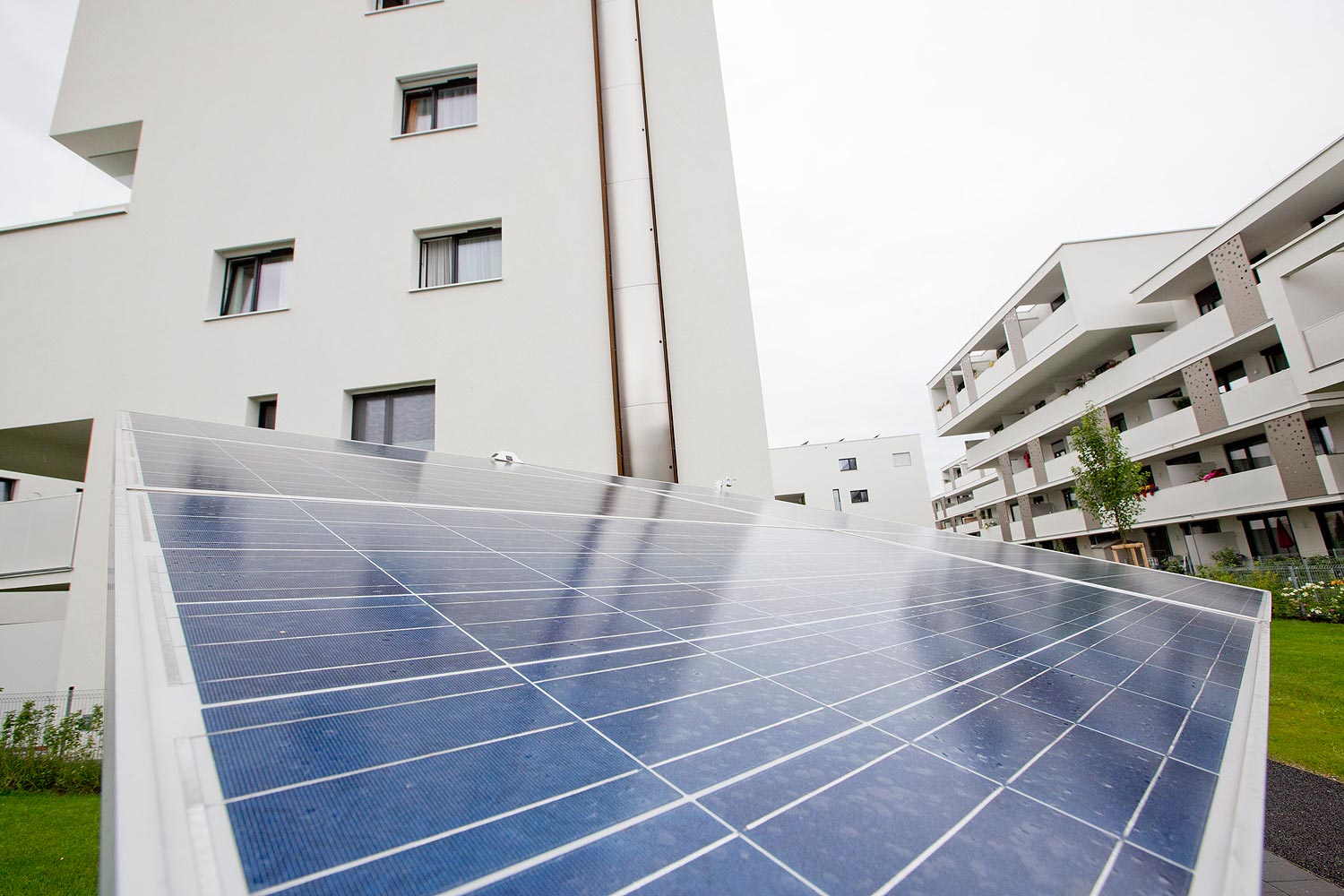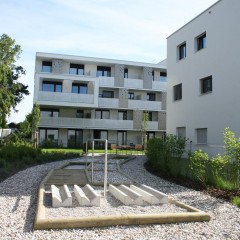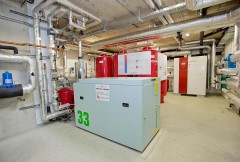The share of electricity generated from renewables is constantly increasing, with many small-scale local suppliers and a fluctuating total supply level. Buildings of the future will not only consume electricity but also generate it themselves. Tying these local supplies of electricity into the grid while maintaining the quality of electricity supply is a major challenge in grid operation. By means of load management (i.e. intelligent regulation of consumer devices in buildings and households) the squeeze on the low-voltage grid can be relieved and the feeding in from local, fluctuating sources of electricity are favored.
As part of the HiT project “Houses as interactive participants in a Smart Grid“, the Smart-Grid-oriented housing development ROSA ZUKUNFT has been erected in Salzburg. The demonstration facility provides a very useful degree of flexibility by means of a combination of heat and electricity suppliers, storage and consumers with an automatic control system for the buildings. The aim here is to tie both the buildings and their residents into the energy system as interactive participants.
Full integration into the grid
The housing development’s power centre has been designed so that the buildings can react appropriately to the state of the power grid and the availability of renewable sources of energy. A CHP unit (Combined Heat and Power generation), a buffer storage facility, a heat pump, a PV facility and a link to the district heating grid have all been implemented. All these systems are coordinated via an automatic control system. At times when grid supply exceeds demand, the housing development is meant to charge the storage systems; when grid demand exceeds supply, it is meant to reduce consumption or feed into the grid. To aid in this a price plot has been constructed, made up of a grid element and a power element. The plot is transmitted to the buildings one day ahead where it is processed. The Building Energy Agent (BEA) generates a time schedule for the control system and a forecast of relative load for trading electricity. Load management of electricity suppliers and consumers is taken care of without residents being bothered in any way.
Evaluation
From April 2014 to March 2015 the housing development was assessed in a field trial covering both technical aspects and user behaviour. Out of a total of 129 flats, 34 were equipped with indoor air sensors, room-temperature controllers etc. for monitoring purposes. The most important facility for residents to interact with the system was the web application “Smart Centre“, which provided various services such as energy feedback, home automation, car-sharing and a forecasting clock for information about a dynamic (time-variable) power tariff. Among other findings it turned out that the residents in the flats monitored consumed almost 15 % less electricity over the trial period.
CONTACT
Marietta Stutz, Salzburg AG
mariettaapollonia.stutz@salzburg-ag.at
www.smartgridssalzburg.at


